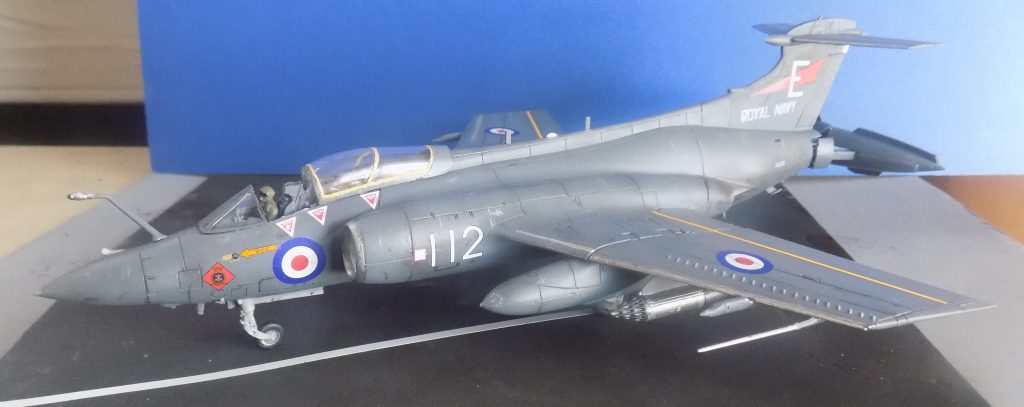
Another one of my ventures into classic British post-war jets, this time the famous Blackburn Buccaneer which entered RN service in 1962 ‘to counter the significant threat of a massive Soviet naval expansion programme’ (Airfix).
This was quite a challenging kit as most jet models are and needed a bit of forethought before actual construction. There is an option for folded wings as it is a carrier aircraft but I decided to keep mine down as I like the lines of this aircraft so much. As you can see, I have also deployed the airbrake at the back of the aircraft although initially I had left it closed which required a bit of delicate surgery to remove it!

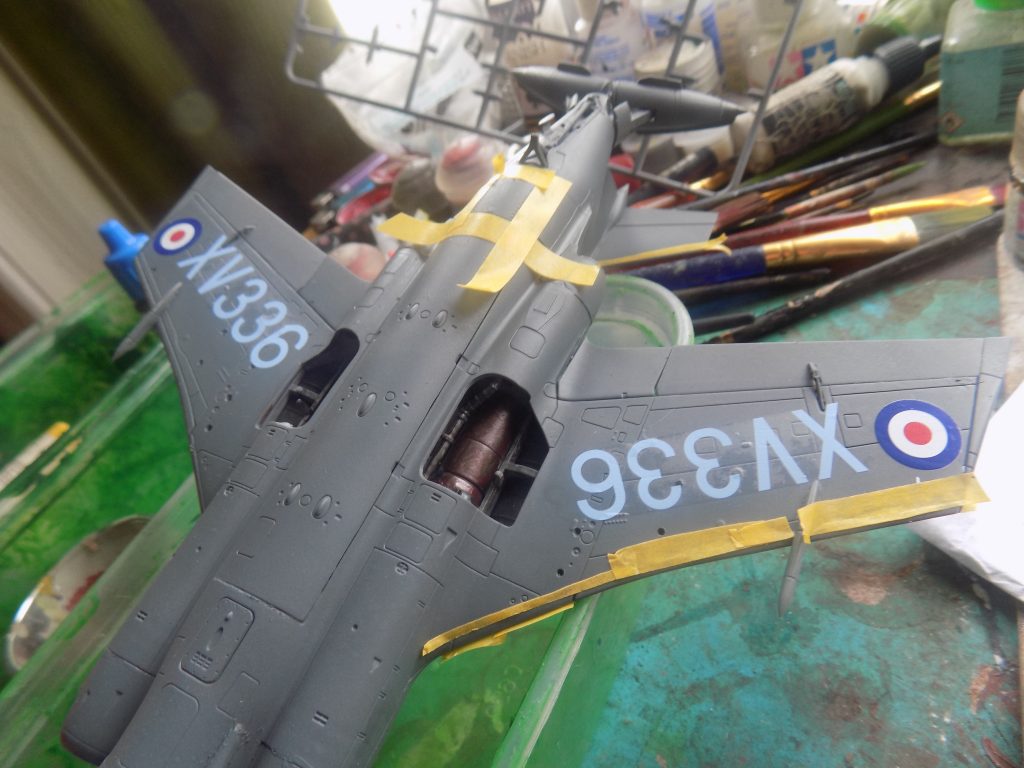
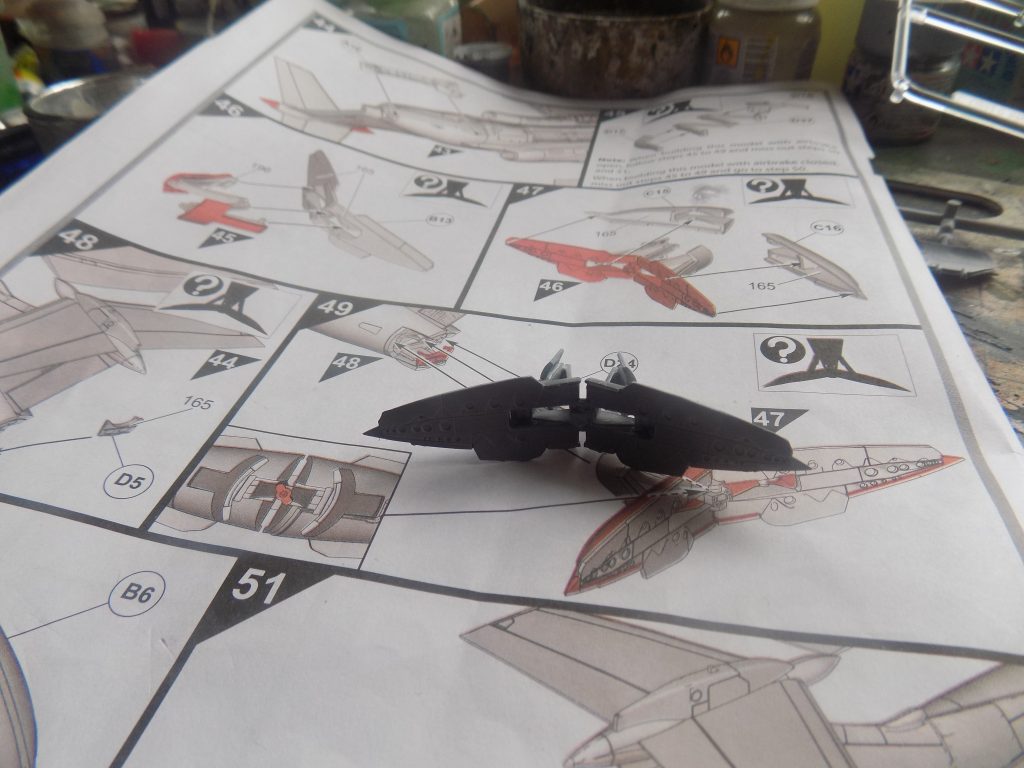
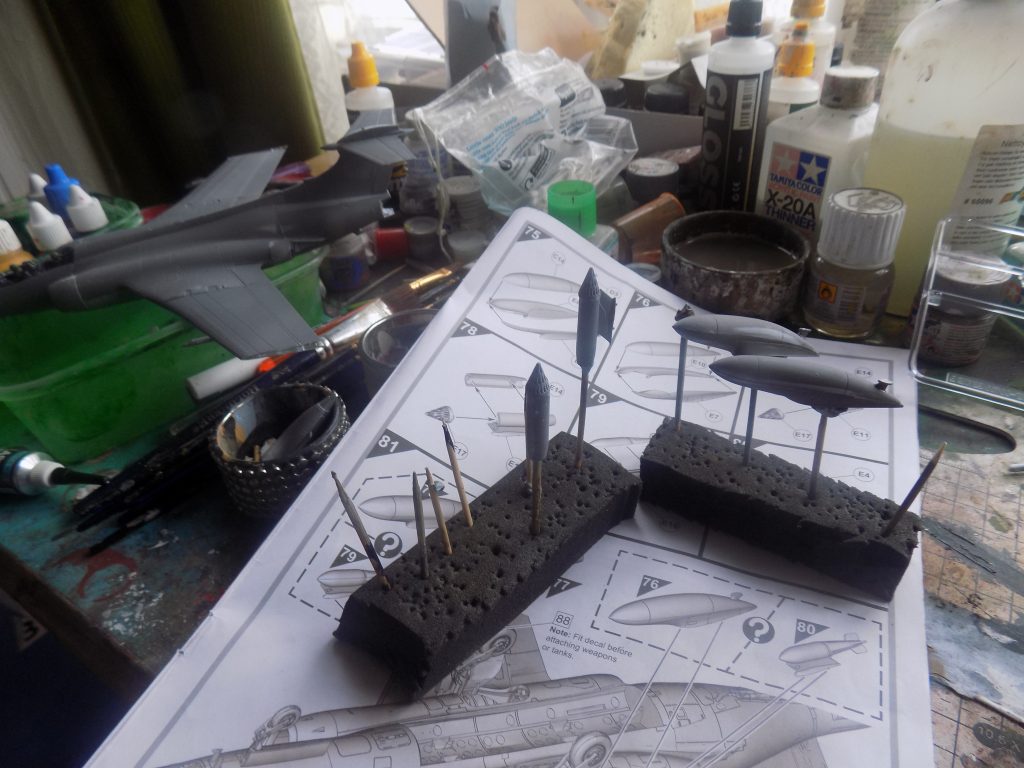
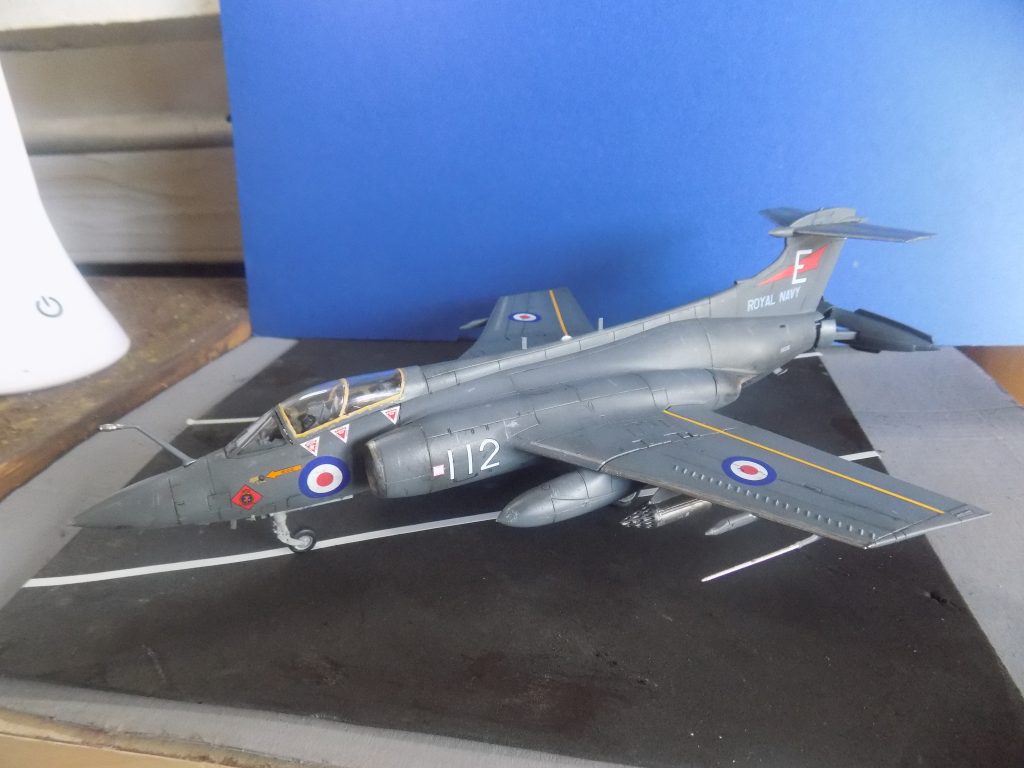
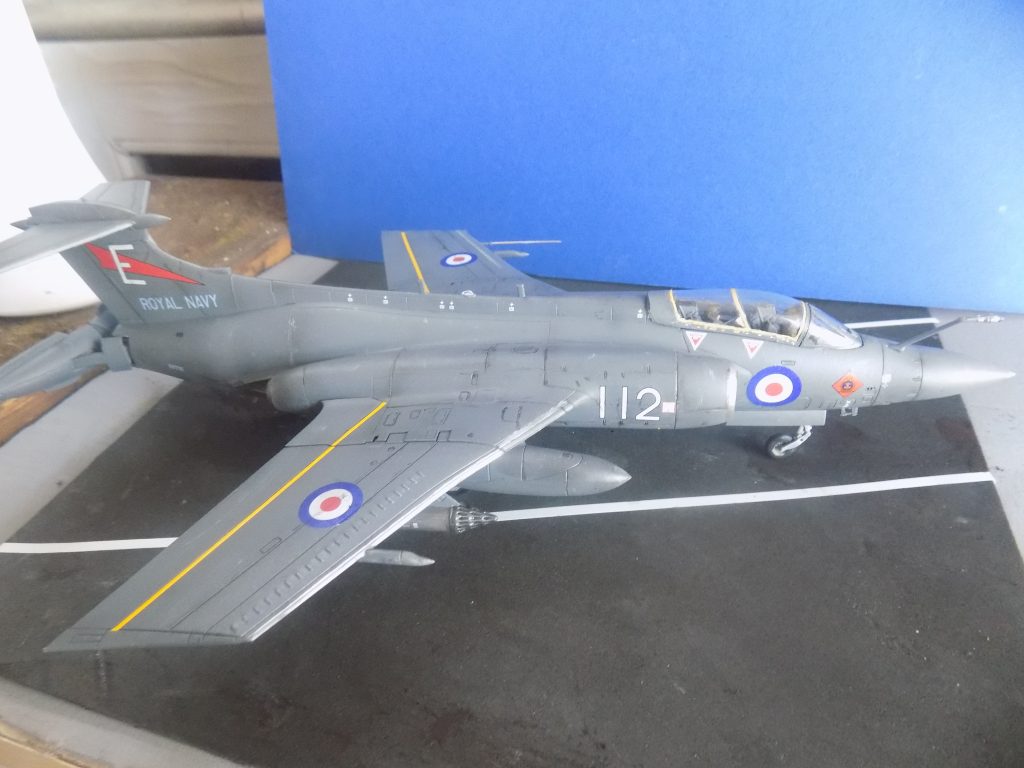
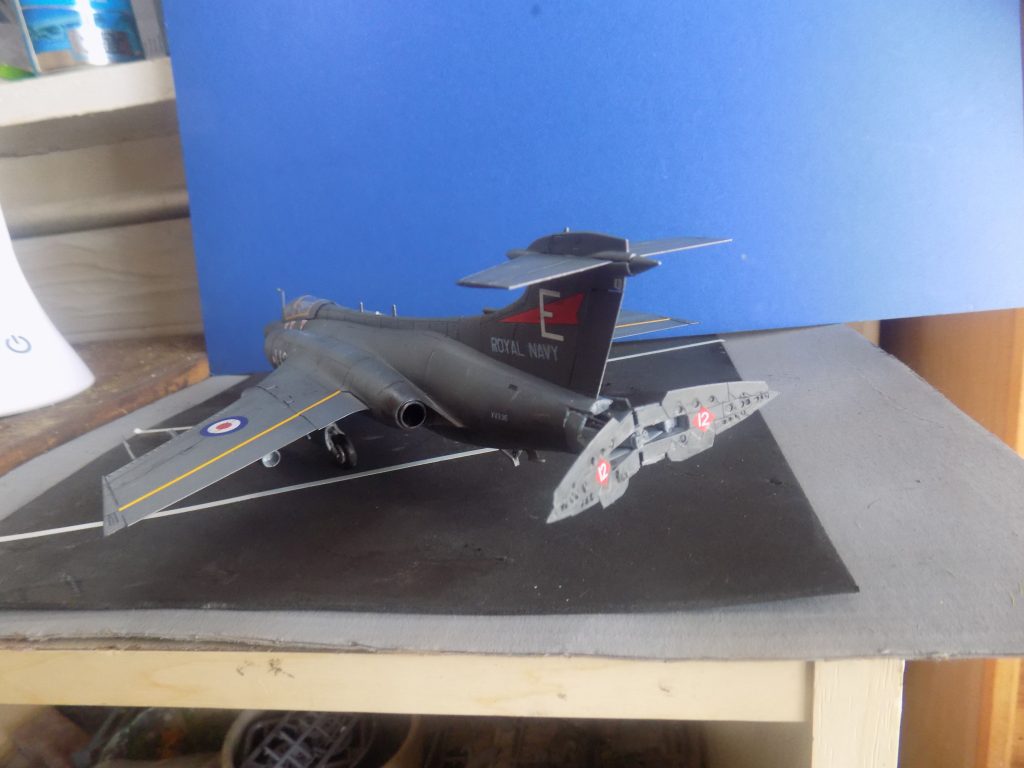
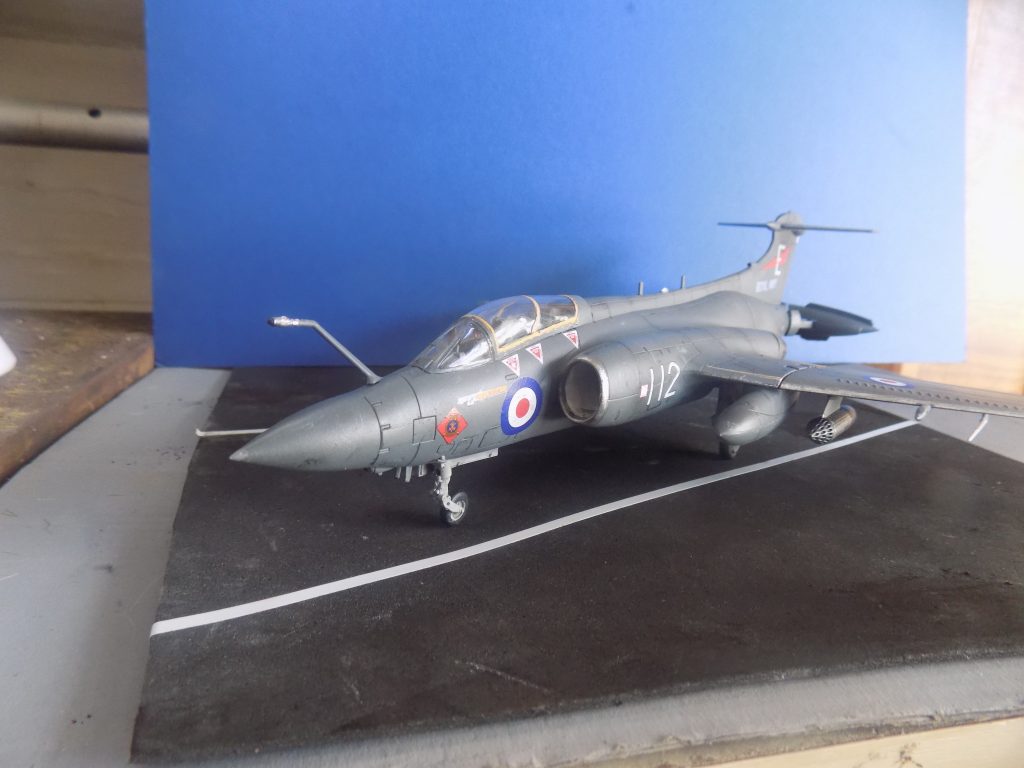
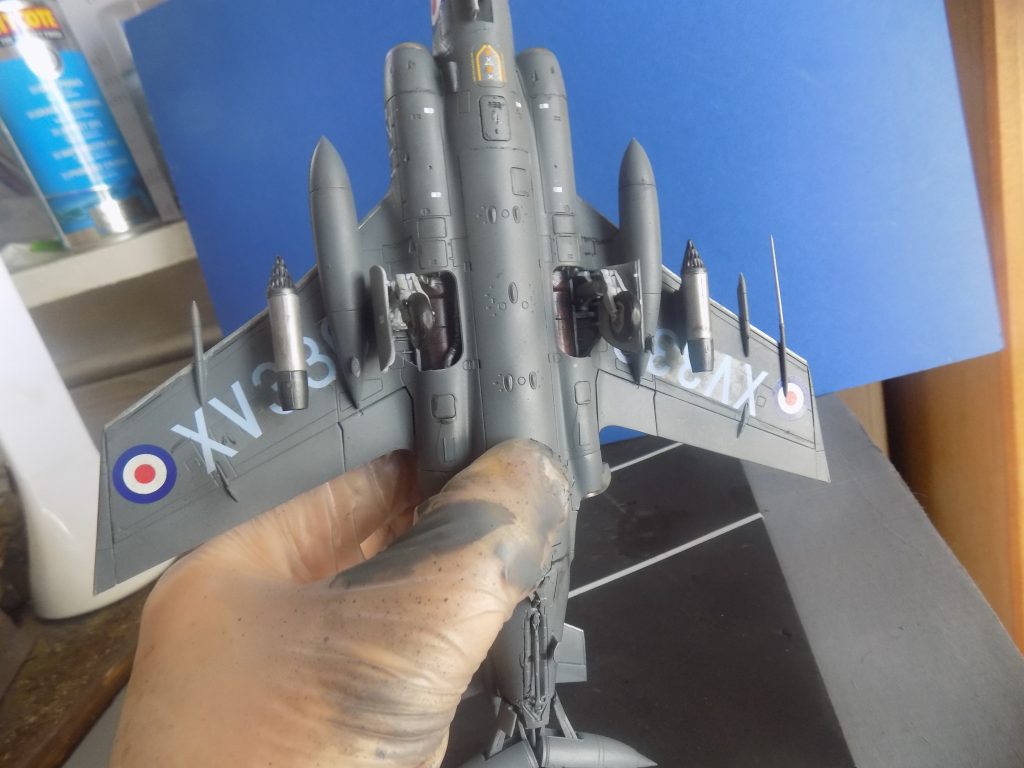
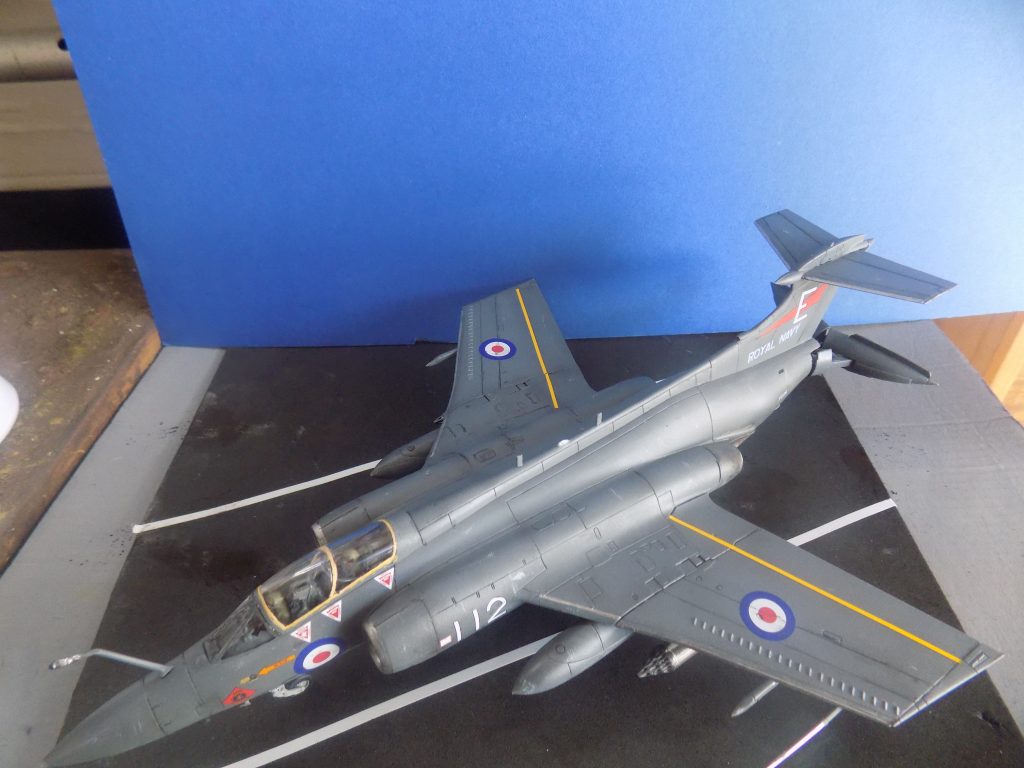
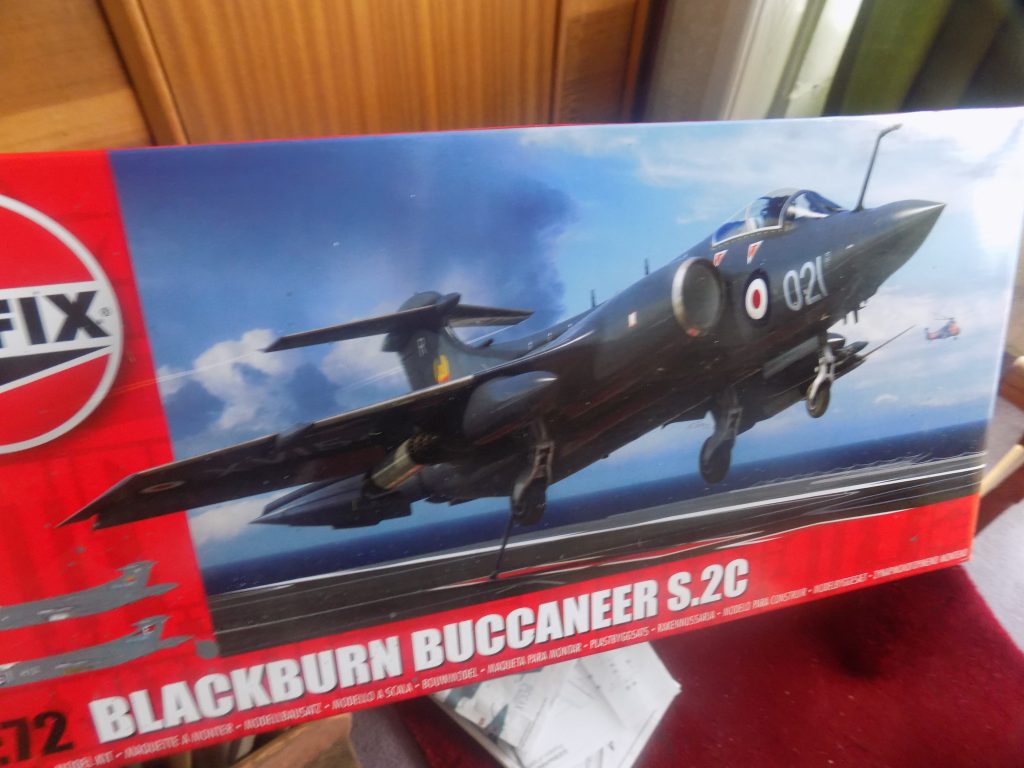
History
Just a note about the Buccaneer from James Hamilton-Paterson’s book ‘Empire of the Clouds’. Apparently, the Navy had been against the TSR.2 (the eventually aborted ‘Tactical Strike Reconnaissance’ aircraft ed. )because they had been promised a carrier-borne strike aircraft for their own use, the Blackburn Buccaneer, and they worried that the TSR.2 project would consume all available funds before the Buccaneer became airborne. The RAF wanted an aircraft which was to be supersonic, which the Buccaneer unfortunately was not, and after the Lightning anything else was considered a retrograde step. As he puts it, ‘Additional heat was supplied to this argument by the ancient inter-service rivalry in which the RAF and the Fleet Air Arm each pretended the other hardly existed, let alone was competent to fly an aeroplane’ (!).
In the end, Blackburn came up with a proposal for the P.150 supersonic version of the Buccaneer.
Airfix states:
‘British thinking at the time was to use their new strike jet to destroy the Soviet ships with a combination of conventional and nuclear weapons. Capable of extremely high speeds at low level, the Buccaneer proved to be ideal even though the performance of the first Buccaneers to enter service was affected by a lack of power from their two de Havilland Gyron junior engines. Addressing most of the issues which prevented the early aircraft from realizing their full potential, the Buccaneer S.2 was a much improved platform, boasting a modified wing, increased fuel capacity and a pair of powerful Rolls Royce Spey engines. This new variant provided the Fleet Air Arm with a truly exceptional strike aircraft, which excelled in the low-level environment. As the Royal Navy retired their larger carriers in 1978, their much-loved Buccaneers were transferred to the care of the Royal Air Force (along with their pilots I might add), who were already admirers of the many qualities possessed by the aircraft and grateful for this increase in their inventory. At its peak strength in the early 1970s, the Buccaneer equipped no fewer than six Royal Air Force squadrons.’
Specifications:
Max speed: 667 mph
Armament: various combinations of unguided bombs, laser-guided bombs and the Red Beard tactical nuclear bombs. 4 Matra rocket pods, 2 x AIM-9 sidewinder or 2 x AS-37 Martel missiles, or 4 x Sea Eagle missiles.
Beautiful finish you have done on the Buccaneer, looks very realistic. Was a great British aircraft and always a joy to see.Thanks for sharing.
Thanks, yes hope it warmed your heart as it did mine. Not sure if I ever saw one close up but no doubt saw one flying over. A nice trip down memory lane making it